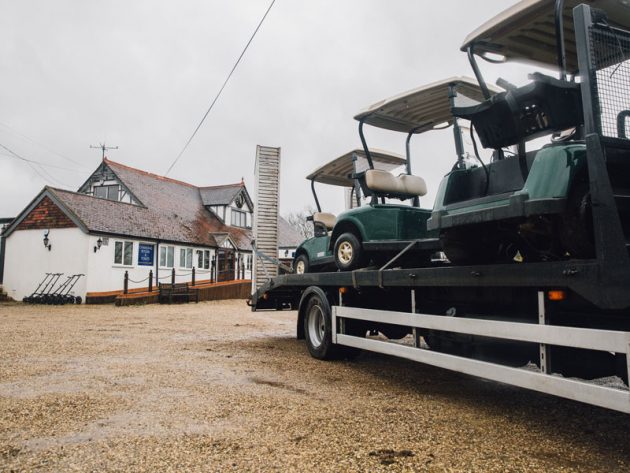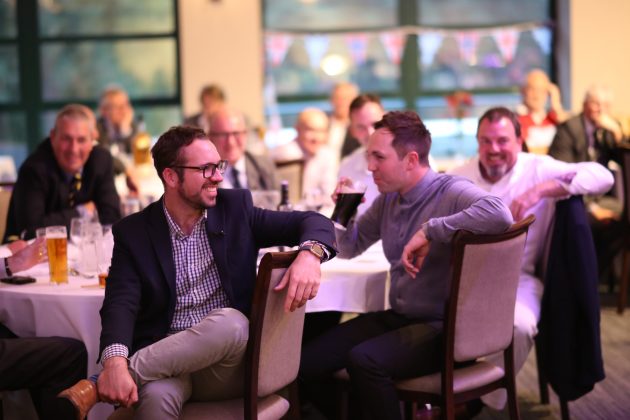Should We Worry About Golf Clubs Closing?
Many golfers may have heard of a local club that is now no more. Should we be concerned for the game’s future?

Many golfers will have heard of a local club that has closed its doors. Should we be worried for the game’s future?
Should We Worry About Golf Clubs Closing?
In recent months, stories in the national and regional press about golf club closures across the UK have raised concerns about our sport’s inexorable decline.
Towards the end of 2016, for example, there was coverage of the closure of golfing facilities at Padbrook Park in Devon, Channels Golf Club in Essex and Kyngs Golf and Country Club in Leicestershire.
The 100+ year-old Laleham Golf Club in Surrey closed earlier this year too.
Are these cases a clear indication of golf’s demise, as the press is inclined to portray? Or is it merely a natural evolution of the incredible network of golf clubs across the country and an obvious, inevitable result of current economic conditions?

There are no specific figures on club closures but there is a record of the number of clubs affiliated to England Golf. These figures show that at the start of 2011, there were 1,951 affiliated clubs, at the start of 2015, there were 1,930 and at the start of 2016, there were 1,926. On the face of it, these numbers do appear concerning – an average of five clubs per year over the last five years disaffiliating.
Subscribe to the Golf Monthly newsletter to stay up to date with all the latest tour news, equipment news, reviews, head-to-heads and buyer’s guides from our team of experienced experts.
But it should be remembered that a club disaffiliating doesn’t mean the golf facility has necessarily ceased to function. Also, it’s not an indication that a golf facility has been unable to sustain its business. The owner may have decided on an alternative use for the land, for example.
It is worth noting that, as of 2017, short courses and stand-alone driving ranges will be able to affiliate to England Golf, so the numbers will most likely rise again next year.

In Scotland, there are 587 clubs affiliated to Scottish Golf and average membership numbers at those have stabilised in recent years. Since 2013, there have been nine closures of affiliated clubs but three were re-opened. In Wales, there are 150 clubs affiliated to the Golf Union of Wales and two have closed in the last two years.
In total then, across England, Scotland and Wales, there are currently 2,667 affiliated clubs and there have been 31 affiliated club closures in the last five years (assuming that all those disaffiliated in England have actually closed). This represents just over 1% at worst – perhaps not a figure to induce wailing and gnashing of teeth.
Analysing the figures
The most recent club membership questionnaire produced by England Golf returned some interesting results.
Responses were received from 602 clubs across England, representing a broad demographic. The key finding of the questionnaire was that membership numbers have remained largely consistent over the two years from 2014 to 2016.
The average club membership in 2014 was 466, compared to 460 last year. Adult members are playing more frequently than two years ago – 75% of adult male members play at least once a month, compared to 65% in 2014.

Another important point to note is that 30% of clubs have actually seen an increase in members over the two-year period, thanks to the implementation of proactive strategies.
Through the survey, those successful clubs highlighted the initiatives that facilitated this rise. These included: creating a welcoming environment, catering for different requirements (not just golfing), interacting with the local community and the development of facilities. If clubs are dynamic, they can still attract new members.
Continues below
Expand The Future Of Golf Club Membership

The Future Of Golf Club Membership
Roderick Easdale speaks to a host of different…
Expand Farewell My Friend: The Final Day At Laleham Golf Club

Farewell My Friend: The Final Day At Laleham Golf Club
Elliott Heath laments the demise of Laleham Golf…
Expand Why Be A Golf Club Member?

Golf club membership is plummeting in the UK,…
Redistributing funds
Yes, there have been recent club closures across the country. These will inevitably generate stories and it’s sad to see a facility disappear. But, when a club does close, for whatever reason, it doesn’t mean the members will put their clubs away for good.
Many will move on to nearby clubs, bolstering numbers and coffers. Others will choose to play more itinerantly, paying green fees at a variety of clubs and increasing their revenues. The investment in golf is not lost, merely redistributed.
It should be remembered that the closure of golf clubs and courses is by no means something confined to recent years. The excellent website golfsmissinglinks.co.uk provides an extraordinary record of golf courses and clubs that did, at one point, exist across the UK and Europe. There’s more than just a few!

As an example of the scale, the page for Cheshire and Manchester shows information on no fewer than 75 former golf clubs.
Every region has seen many clubs come and go over the years. Some have moved location; others ceased to exist around the two world wars; others have closed because of financial pressure. Clubs closing is not a new thing.
Economic factors
When the economy has been strong and people are cash rich, golf clubs are an attractive proposition. Look at the boom of the 1980s, which saw the construction of many UK golf facilities. Look also at developing countries like China, where golf facilities have been thrown up at a tremendous rate. But, when the economy takes a downturn, there will be a rebalancing.
The fact that only a very small percentage of golf clubs have closed during the recent economic turndown here should, in fact, be viewed positively, particularly when one considers the number of clubs that closed in tough times of the past.
At the time of writing, there are nearly 3,000 affiliated golf clubs across the UK and most of these strive to be proactive and dynamic in order to remain attractive to the four million people who play golf each year. The closure of a golf facility is not indicative of golf’s demise. It is, almost always, the consequence of economic factors.
Whether these stem from external or internal pressures, the key thing is that the majority of those players affected will re-invest elsewhere in golf. A club disappearing is sad, but it shouldn’t be seen as a death knell for the sport.
Make sure you follow Golf Monthly on Facebook, Twitter and Instagram.